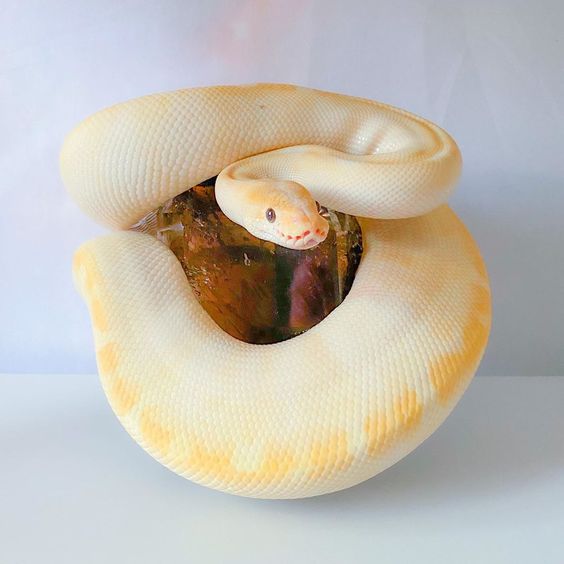Ball Python Morphs are Ball Python snakes with a certain coloration or pattern look that has been carefully bred. Morphs are created by expert snake keepers who attempt to identify mutations present in nature. Selective breeding is used to create particularly vibrant and fascinating color variants.
Ball python morphs genetic mutations are handed down over the generations, exactly like human genes. Genes might be dominated, recessive, or codominant for this reason. Breeders use these genes to create a variety of morphs:
- When an embryo inherits two alleles with partial dominance, it is known as codominance. This provides for a one-of-a-kind mix of visual characteristics.
- Dominant-dominant alleles “dominate” the design or coloring by masking the impacts of the other allele.
- Recessive alleles are “secret genes” that only appear when they are combined with some other genetic characteristic.
There are many types of ball pythons, including 50 widely known morphs that come in a variety of color variants. These ball python color morphs create a range of colored ball pythons, making it possible for you to choose the one that best suits your preferences.
1. Spider Morph
In 1999, the Spider morph was revealed as a one-of-a-kind dominant gene. The basic color of spider morph is a bronzer that fades at the end of the back. Along the edges of the stomach, the color tends to become light and spotted.
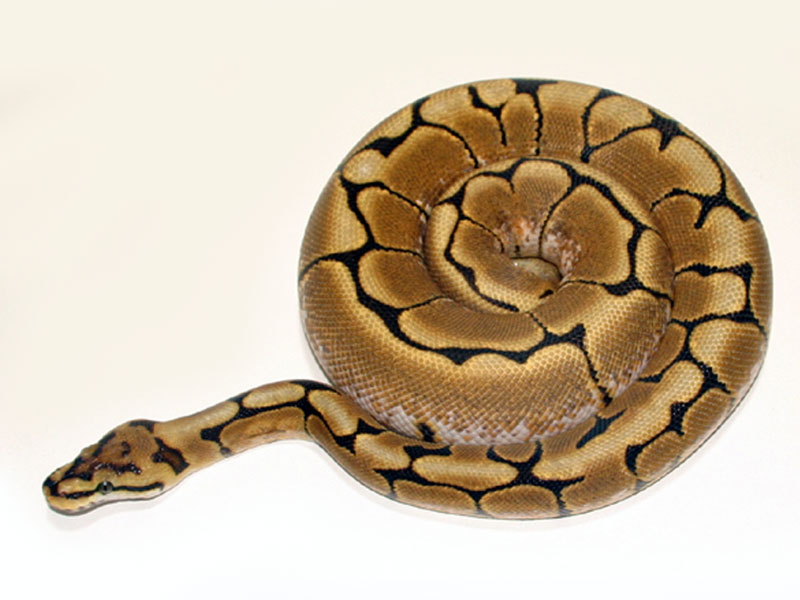
They feature darkish patterning and dots all over their body, as well as distinctive black patterns on their neck and head.
Furthermore, these morphs are by far the most renowned and may be bought for $150.
2. Banana Ball Python
In 2003, the very first Banana Ball Python morph was purchased for $25,000. Breeders have been generating these remarkable mutations for hobbyists, and they have grown in popularity since then. They’re also a lot more accessible.
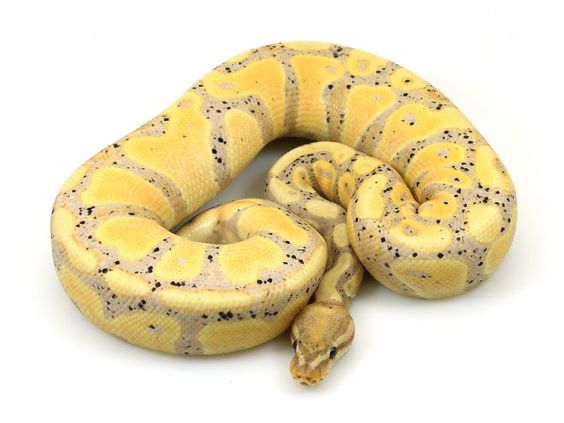
This mutation, with its tan body and yellow patches, sometimes has dark dots over its fading yellow body, costs approximately $200 currently.
3. Albino Ball Python
The Albino ball python was the first recessive mutation, emerging in 1992.
Albinism refers to a snake’s inability to create the colors brownish, charcoal, reddish, or tangerine in its skin. Albinos are usually striped brilliant yellowish with vibrant red eyes.
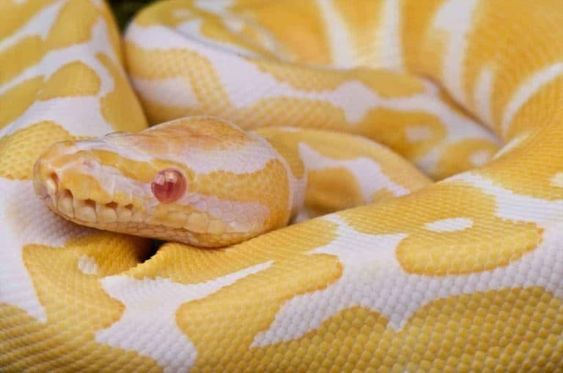
Albinos are admired for their striking patterns, which often fade to vivid shades of yellow. They sell between $250-$400, according to their maturity level and brightness intensity.
4. Piebald Ball Python
Amongst the most immediately acknowledged morphs is the Piebald. A recessive gene causes the Piebald’s diverse patterns, which were first developed in 1997.
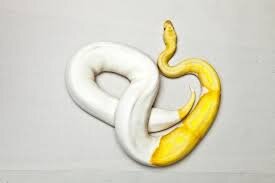
5. Pastel Ball Python
The Pastel Ball Python, popularly known as the “Pastel Jungle,” is a simple morph that was initially introduced in 1997.
With a blooming brown base hue and a crisp white stomach, these reptiles have a typical design. Their eyeballs have a peculiar light green tint, and their light head is adorned with white lips.
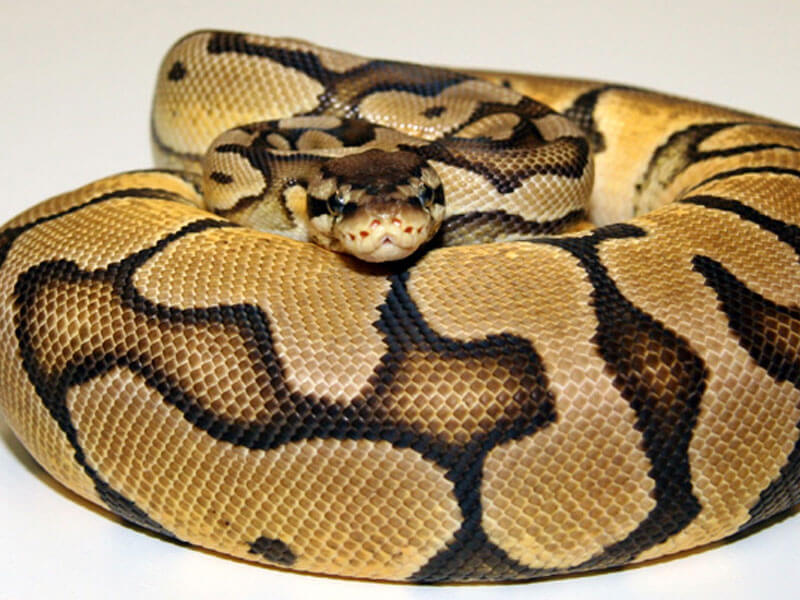
When two Pastel morphs are crossed, a whole new morph snake is born.
The diminished golden pattern on Super Pastels is known as “Purple Haze” because of the purplish tint. Their layout is irregular, including some striping and more “focal point” discoloration.
A Pastel may be purchased for $75.
6. Axanthic Ball Python
The segments of xanthic morphs are devoid of red and yellow colors. As a result, the Axanthic has various shades of grey, charcoal, whitish, tan, and silvery.
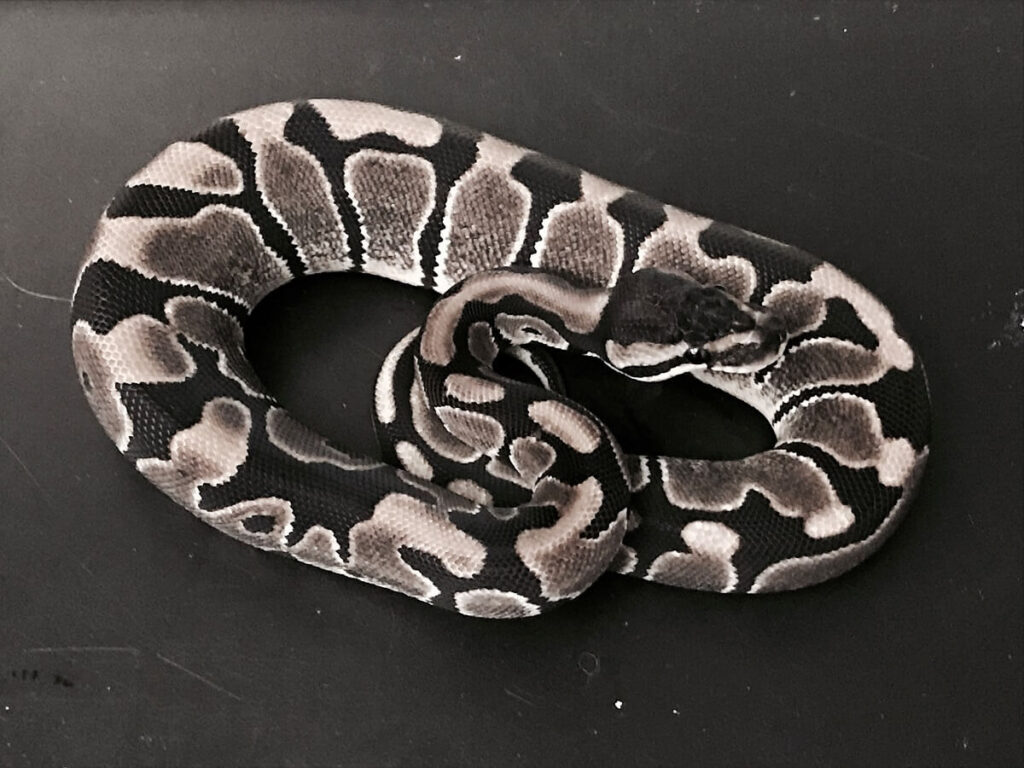
They feature a regular design with a strong contrast that develops to brownish with time.
These snakes have been marketed to keepers all over the globe since the recessive gene was found in 1997, to develop more morph variants.
7. Mojave Ball Python
The Mojave, one of the most well-known morphs, was initially produced in 2000. Their genetic codominance is exploited to create beautiful designs, such as the Blue-Eyed Lucie.
The tint of this Ball Python ranges from brownish to bluish-black. Rich browns and brilliant hues of yellow with cream-colored blazing compensate for their design.
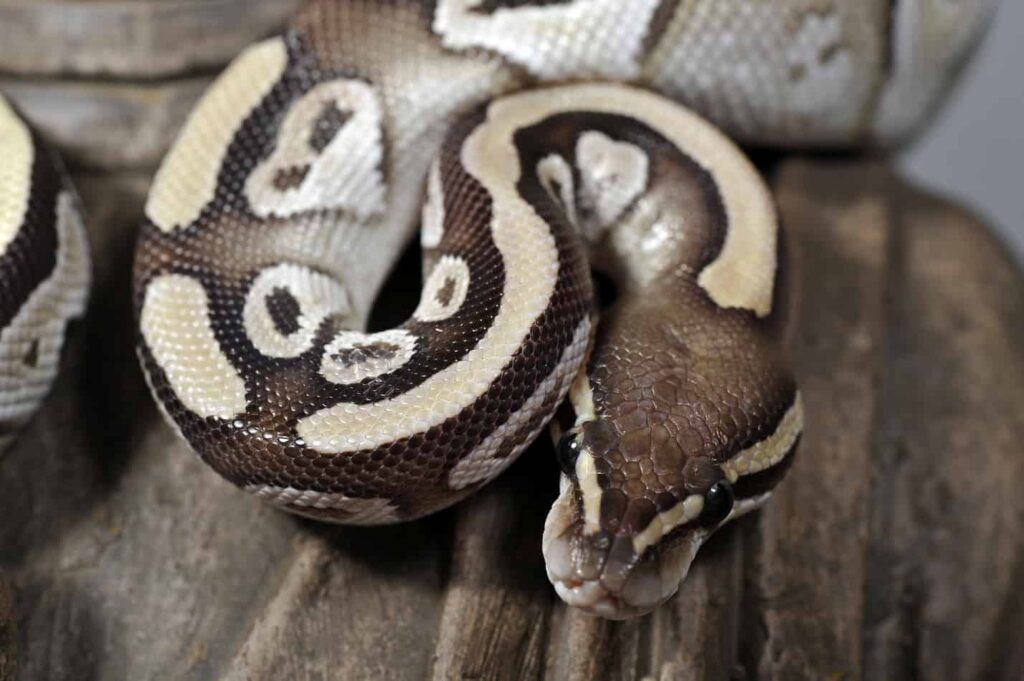
The “Mojave Pattern” looks like a regular alien head, except it has blazing and only one little hole marking.
8. White Wedding Ball Pythons
The White Ball Python was identified by chance in 2007.
The first snake was accidentally found in a batch that emerged on the breeder’s marriage day, thus the name “White Wedding.”
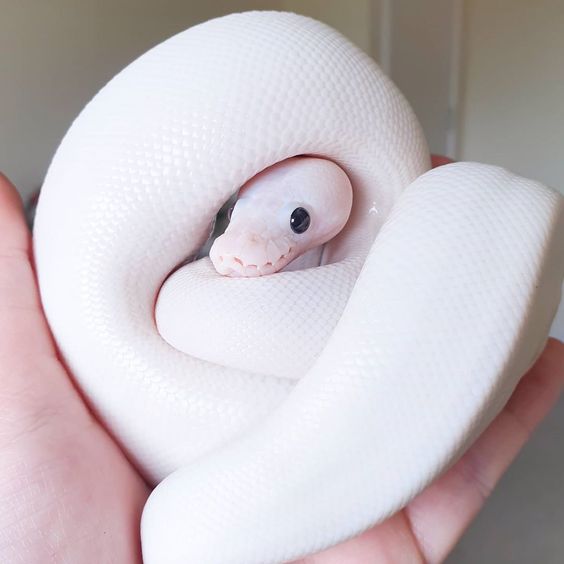
White Wedding pythons have the clearest leucistic appearance of all of the leucistic colors. They don’t have colored skin, but they do have dark brown eyes.
These pythons have been consistently bred since 2007 and may be bought for $650 each.
9. Scaleless Ball Python
The Scaleless morph is the oddest of all the morphs on this collection. Scaleless Ball pythons were developed from Scaleless-Head morphs for the first time in 2013.
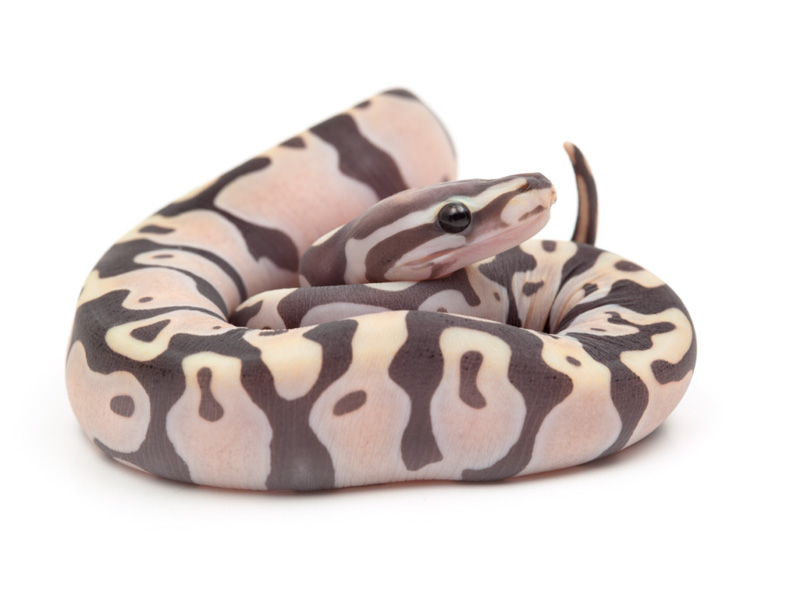
They have skin rather than scale, as their name implies. The number of scales on their bodies might range from none to some few skin patches, but they often have stomach scales. They wouldn’t be able to travel throughout the floor if they didn’t have scute on their bellies.
For $2500, you can get one of these scaleless pythons inside your residence.
10. Sunset Ball Python
The Sunset is a unique morph that was created in captivity from a regular morph in 2012.
This snake is rich reddish with copper markings and a deep red forehead. They are beyond any other morph on this listing and are incredibly special.
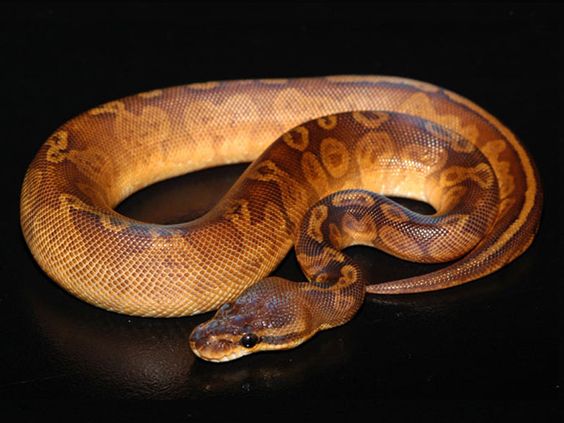
For $70,000, the very first Sunset variant was purchased. The price of this python has been reduced to $1000-$1500 because the gene has been continuously replicated.
11. Bumblebee Ball Python
The Bumblebee morph is a python with incredibly detailed patterns developed via Pastel and Spider genetics.
They are usually tan-yellow, with tiny black dots and lines, as well as a variety of white dots. The vivid yellow variants are known as “Killer Bees,” because, unlike other snakes, their color does not diminish with aging.
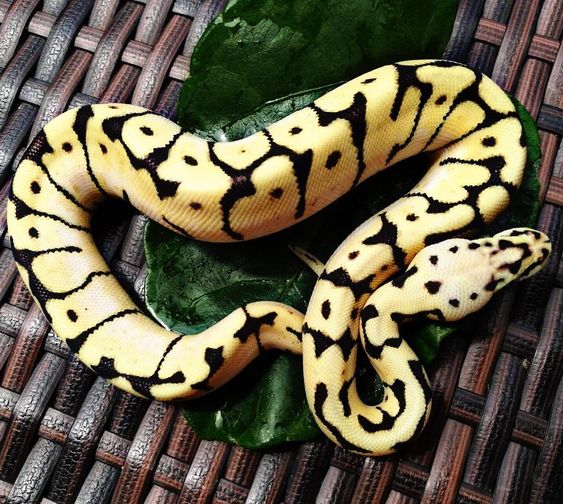
Bumblebees are popular among beekeepers because of their beautiful patterns. Bumblebees are used by some breeders to create more vibrant colors in other morphs.
Deeper tan-yellow shades cost $175, while a Killer Bee may cost up to $450 based on the number of contrasts.
12. Clown ball Python
The color and design of clown ball pythons are affected by a recessive trait. They are typically dark and brown, with crimson tones that diminish towards the stomach and soften as they get older.
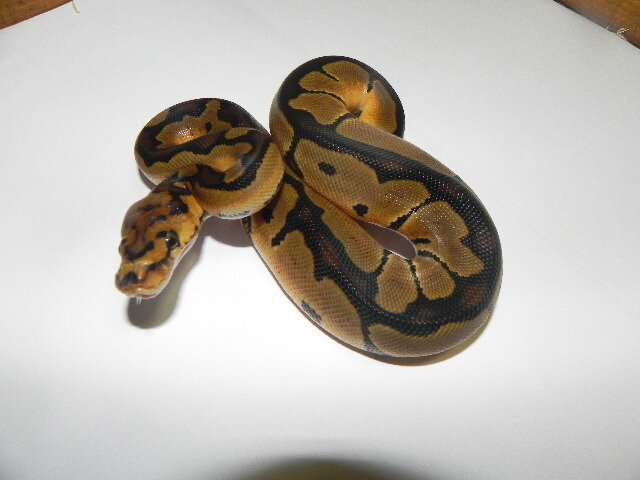
The coloration on this variant is likewise decreased, with a darker, broad frontal band. The Clown’s head is one-of-a-kind, with a complicated arrangement of light and dark tones.
This python is famous as the Clown because the first one discovered had a teardrop-shaped mark beneath its eye, and they are offered for $200.
13. Fireball Ball Python
The Fire Ball Python will set you back $100, whereas the Super Fire, a Black-Eyed Leucitic Python produced by fusing two FireBalls, would set you back $400.
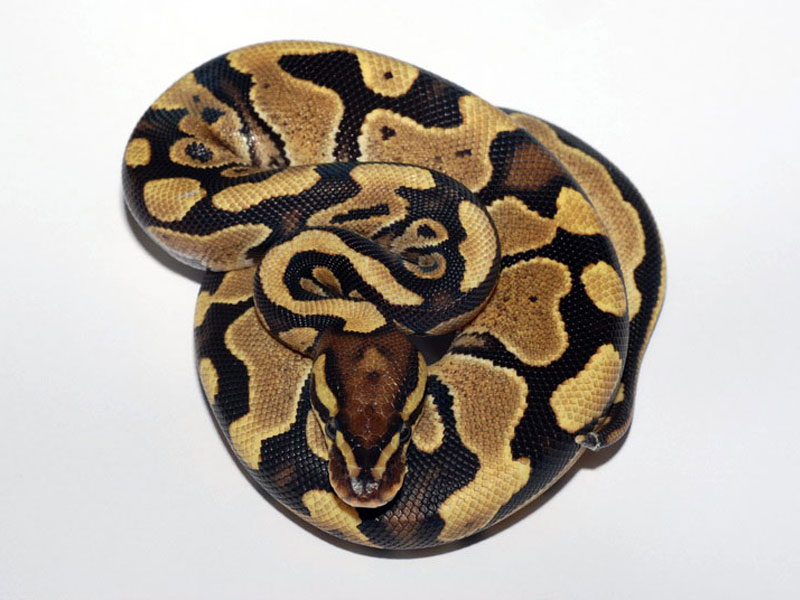
They’re a cross of co-dominant traits that result in a latte color snake with a broad brown banding pattern.
14. Pinstripe Ball Python
The Pinstripe morph was first classified in 2001 and is popular among python enthusiasts because of its prominent spine pattern.
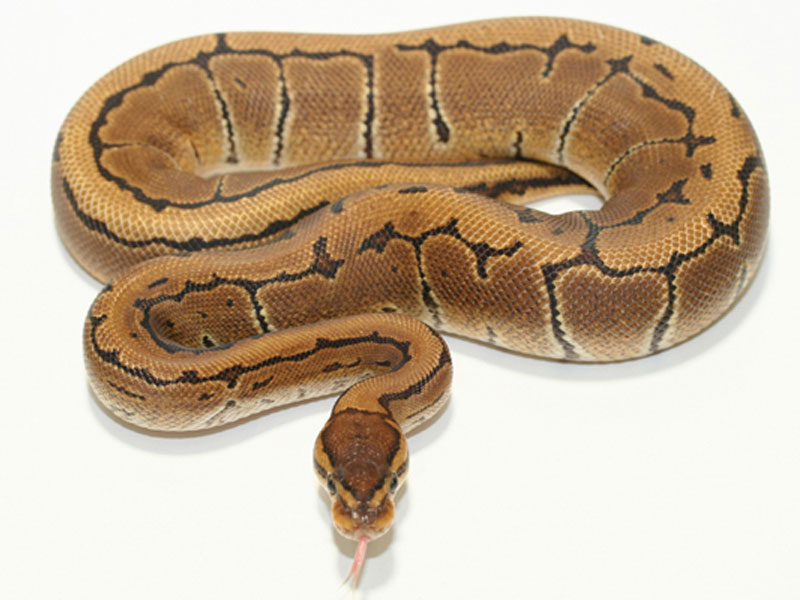
Pinstripes are desirable among breeders because they may be mated with certain other morphs to eliminate colors and generate a more prominent spine.
The hue of these morphs ranges from brownish to copper, with a strong, patternless band running from the rear of the head to the stubby tail. They also have luminous blazing on narrow bands opposite to the pinstripe.
A Pinstripe can be purchased for $100.
15. Vanilla Ball Python
This python isn’t Vanilla, despite the title!
The Vanilla ball python has a lovely spectrum of brown colors, yet this can have a distinct effect on their babies. Vanillas pull out the rich colors in plenty of other morphs, making them a popular choice among breeders. This mutation costs $100 due to its popularity among enthusiasts.
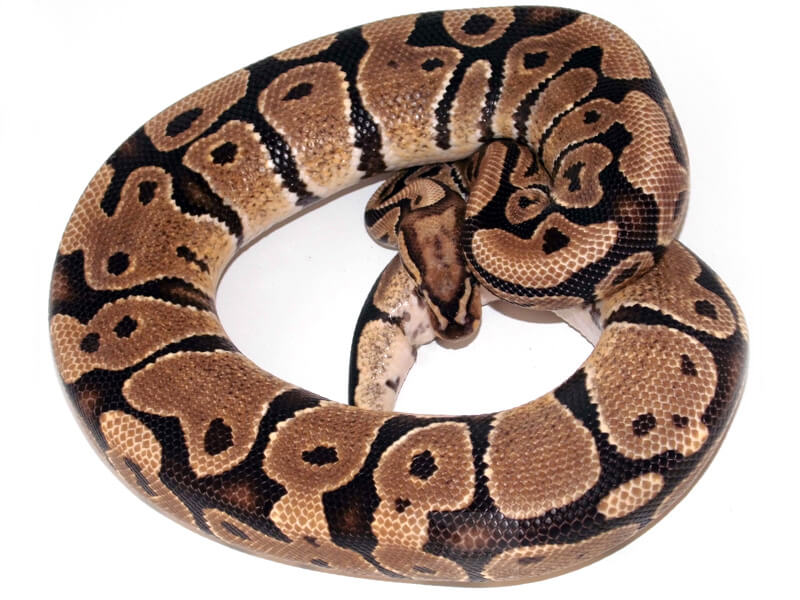
The codominant trait illuminates a regular pattern with a flushed chestnut base and fading head. Vanilla also has a pale-yellow belly.
16. Enchi Ball Python
In 2002, the Enchi morph was discovered as a breeding duo in Ghana, Africa.
A basic Enchi usually costs between $80-$100.
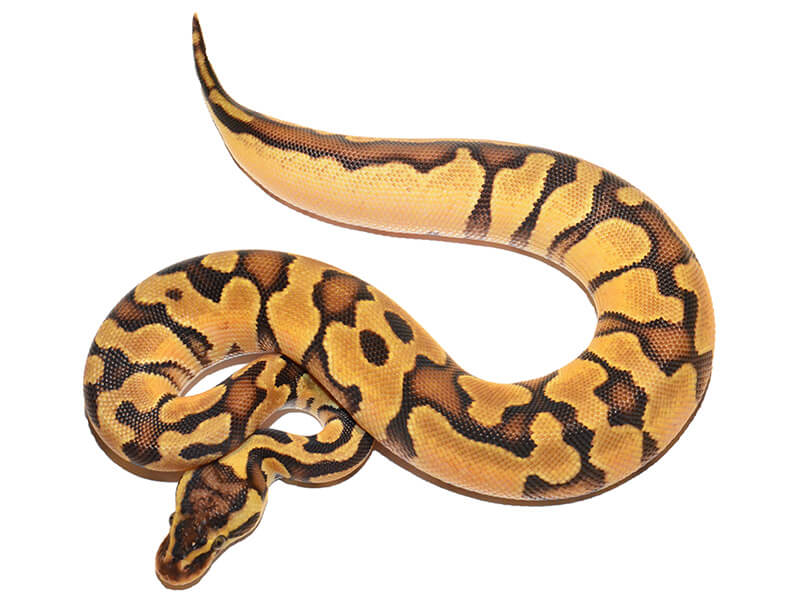
Enchies are more vibrant than regular ball pythons, with orange-tinted edges and a circular design on the rear of their heads that displays blushing.
When mated to other types, their traits are codominant, resulting in more distinct patterns in their progeny. The color difference is almost too slight to discern in a hatchling, but it will become more noticeable as they grow older.
17. Purple Passion Ball Python
The Purple Passion morph is the consequence of breeding the Mojave and Phantom morphs, which produces codominant genes.
They were initially developed in 2007 and are currently available for $400.
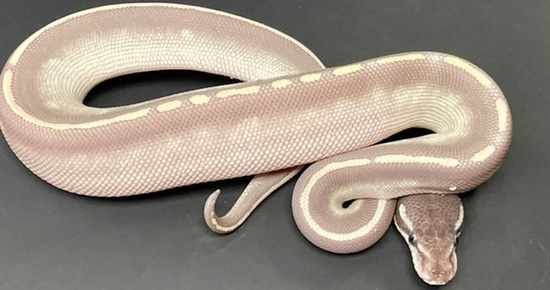
Purple Passions feature a lilac-pink body with a plain side.
They also have dark-colored eyes and a light, off-white stripe down the back. The depth of their lavender-pink bodies varies, and some feature circular patches with peepholes, though this is unusual.
18. Black Pastel Ball Python
In 2002, the Black Pastel morph was created for the first time. It was discovered that the morph is a co-dominant gene after the first batch was born.
They are presently priced between $150 and $200.
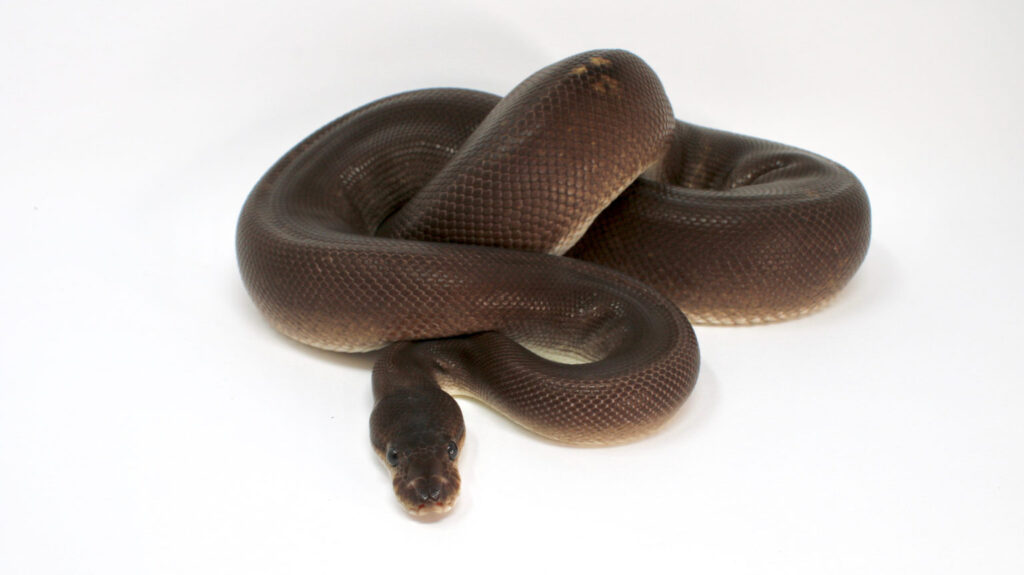
The deep, velvety black, and gloomy grey base hues of this morph are well-known. There is a lot of flushing in their design as well. The belly of these snakes is entirely unmarked.
When two Black Pastels are crossed, a Super Black Pastel is born, which might be black or dark with some patterns. Super Black Pastels are pythons with rusty-colored spots and a black body that have a strong contrast.
19. Cinnamon Ball Python
Cinnamons were identified in 2002 as a consequence of fundamental codominant breeding.
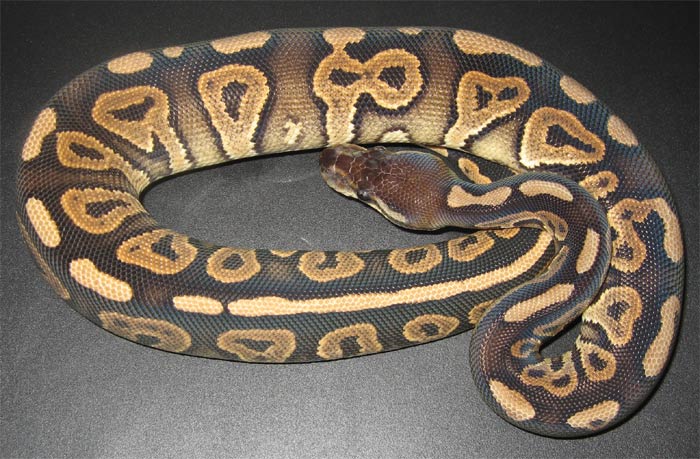
The Cinnamon Ball Python is a popular morph that costs about $100, while the Super Cinnamon, which is produced by merging two Cinnamons, costs approximately $400. The hue of Super Cinnamon Ball Pythons is dark cinnamon color with no marks.
These morphs are often known as black ball pythons since they fade to a mocha hue with age.
20. Lavender Albino Ball Python
In 2001, the Lavender Albino morph was identified and purchased for $40,000!
This standard morph is a mix of Albino and Lavender genetic characteristics. They are the result of a color mutation.
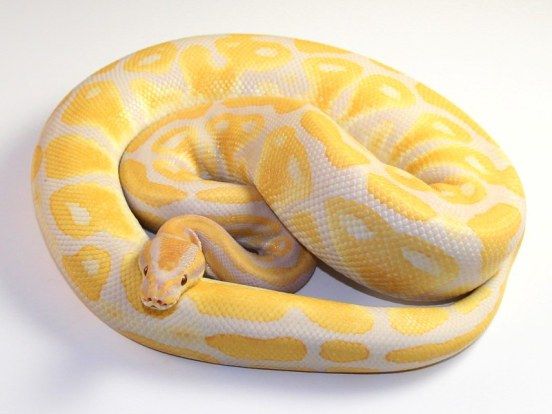
The Lavender Albino is a hybrid of the Albino and the Lavender morph, with a lilac base, yellowish design, and bloodshot eyes. Those with strong contrast in their design tend to be more expensive, and Lavender Albino costs roughly $400 on average.
21. Lesser Ball Python
The Lesser is a simple morph that, when produced, takes a codominant position. In 2001, the very first Lesser was bred and purchased for $30,000.

The basic color of Lesser Ball Pythons is dark brown, flushed, and lightens towards the belly. They feature pale yellow dots on their edges and tail, with spots.
Their head looks to be regular, with a light brown hue.
This morph was one-of-a-kind when it was created, but it is now easy to reproduce and has a very comparable look and color intensity. At $125, they are one of the more affordable morphs in the collection.
22. Black Backed Ball Python
The pattern on these snakes is practically normal. These, however, have a strong, uninterrupted stripe of intense color of brown flowing down their spines, unlike typical types.
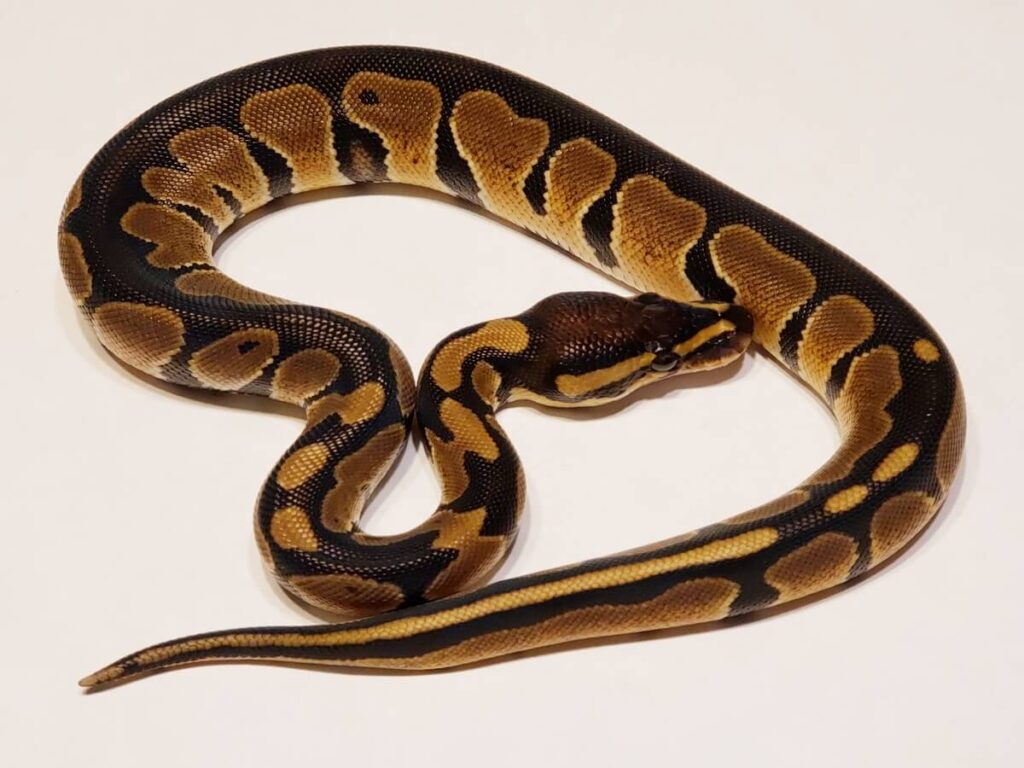
Although it is known that half of a dominant gene’s progeny inherit it, it has yet to be separated for selective breeding.
These snakes are classified as “supernormal” and therefore only price around $50-$100.
23. Butter Ball Python
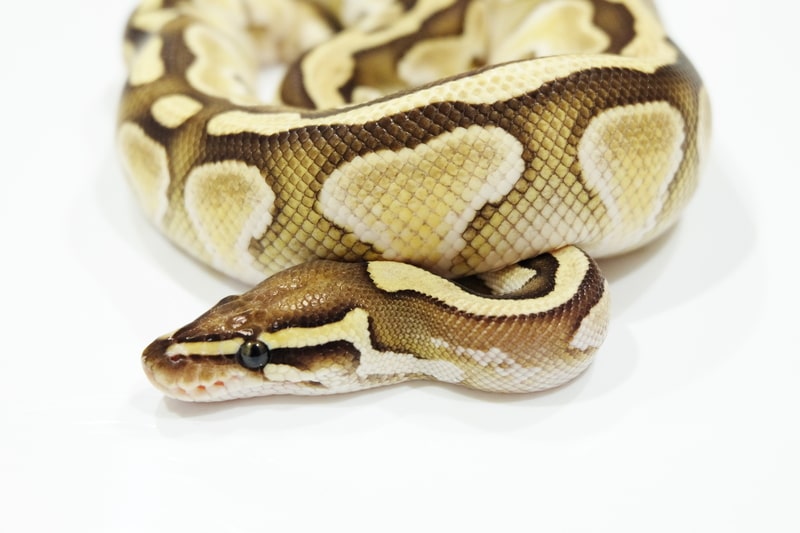
The Butter, which costs $100, is a gentler variety of the yellow morphs.
It’s a common mutation that results in delicate, creamy-yellow patterns with a butterscotch undertone.
Their soft hues are a direct result of the wild environment.
24. Pewter Ball Python
Pewter was bred for the first time in 2003 and is currently available for $200.
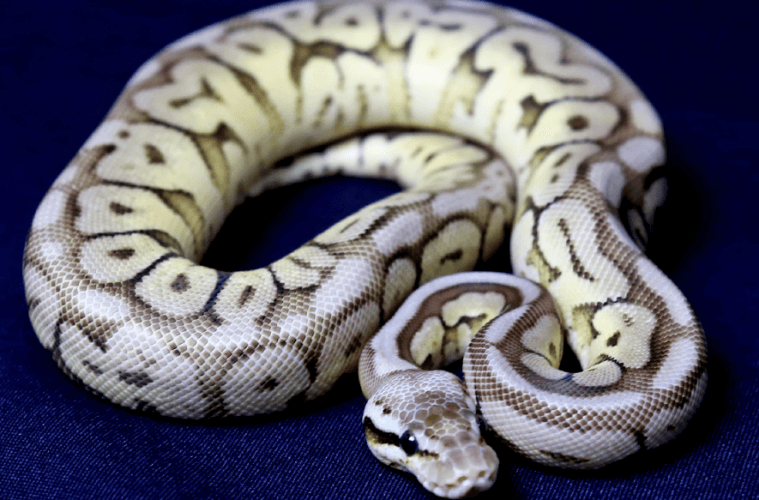
Pewter is a designer mutation, which means it doesn’t exist in wild. Its basic tone is light brown, and it features a broad vertebral line. Golden yellowish holes design with deep brown centers and edges are common in it. Patches or irregular patterns may be seen in some pewters.
All Pewters have the same design and tone.
25. Mystic Ball Python
The Mystic ball python was created in 2005 and is an extremely unusual morph that grows progressively distinctive with maturity. They all start with a warm brown that diminishes to a tan tone as they get closer to the belly. With aging, they frequently turn a purplish-gray hue.
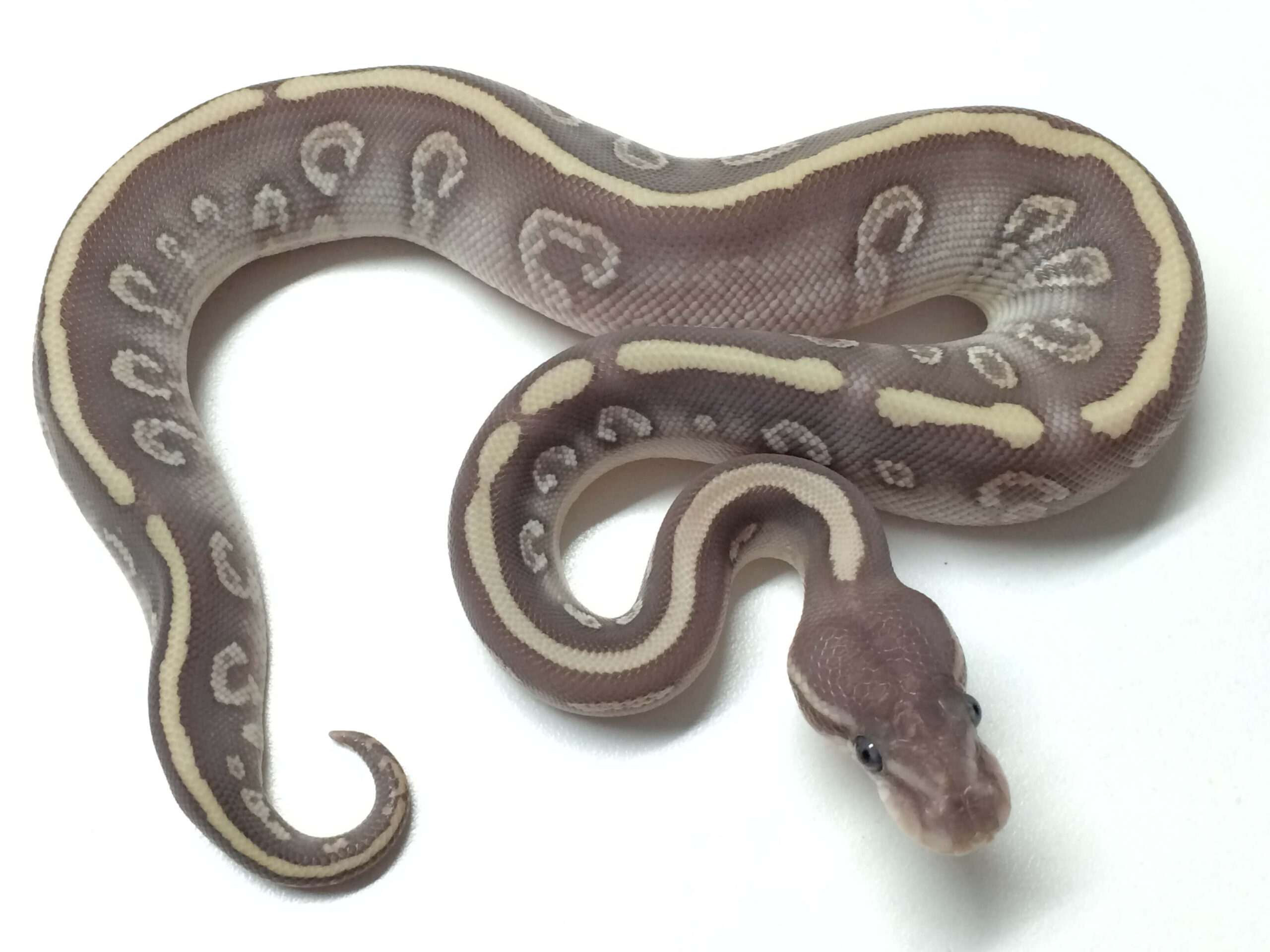
This design is often likened to a Mojave, although it lacks the burning effect. Their heads are usually quite black, with little flushing, and the transformation only leads to a pinstripe on rare occasions.
If color-changing python appeals to you, a Mystic morph is available for $150.
26. Stormtrooper Ball Python
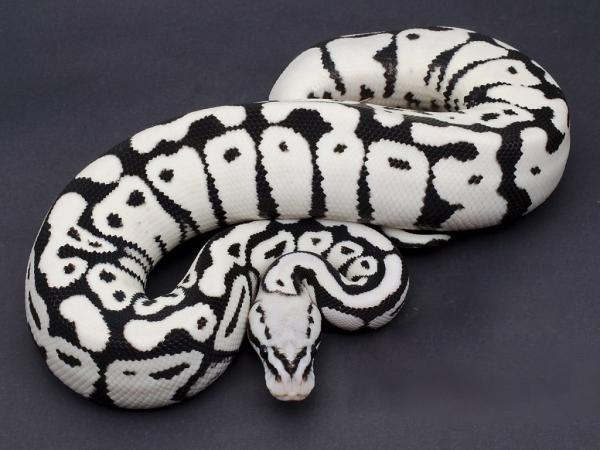
In 2015, the Stormtrooper Ball Python was unintentionally bred. The outcome was a white snake with black stripes.
The black design eventually overcame the white base, but the appearance was never duplicated, therefore this morph is no longer purchasable.
27. Ivory Python
Ivory ball pythons are produced from Yellow Bellies that are doubly recessive.
These designer mutations are a pinkish-white hue with no patterning. A tiny yellow line runs along their back, and their eyes are completely black.
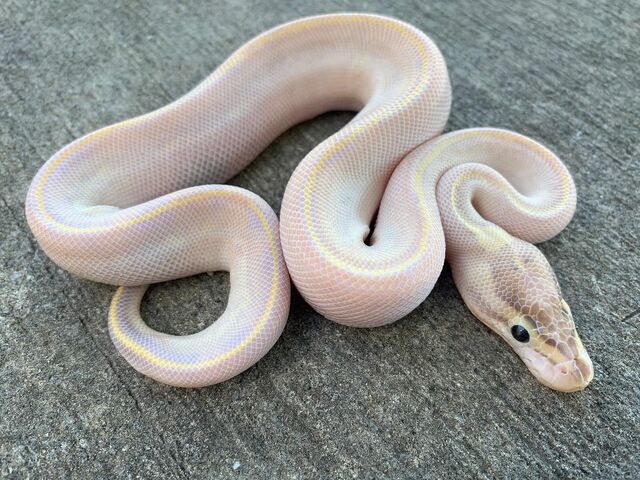
Their heads, on the other hand, are a deep lavender-gray flushing hue. Ivory pythons have brilliant yellow and black spots on their forehead sometimes.
They are only $200-$300 while being incredibly distinctive and varied.
28. Ghost Ball Python
The coloration of the Ghost morph is minimized. This is a frequent mutation in ball pythons that was originally discovered in the 1990s. This morph will cost you at least about $100.
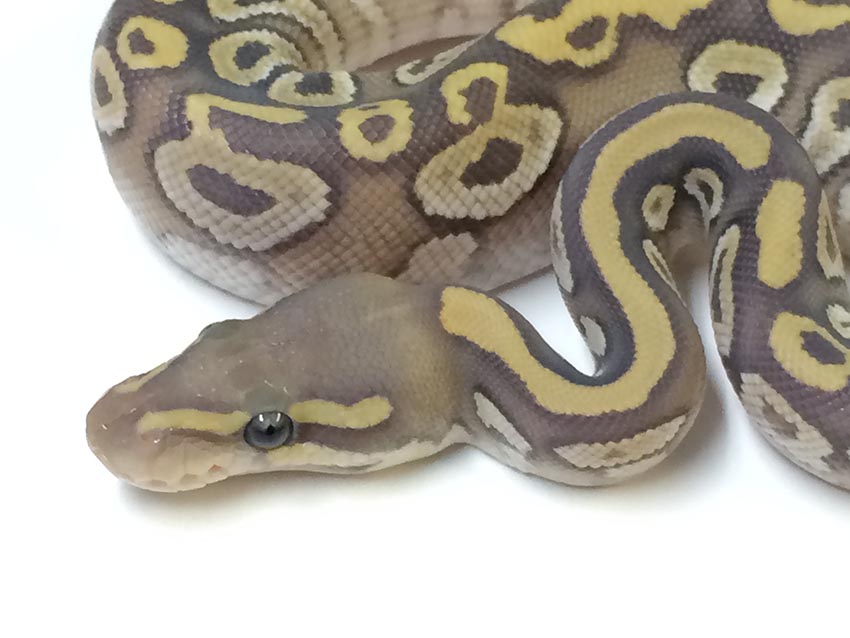
Ghost morphs feature the same pattern as regular morphs, but they are paler in color. They’re milder tans and yellows, with grey flames around the edges of the dots on the stomach side.
29. Coral Glow
White Smokes are another name for Coral Glows, which were first recognized in 2002.
Their deep lavender base coloring with brilliant orange spots distinguishes them. The edges of each of these spots fade to a golden tone, creating the impression that the patches are illuminating.
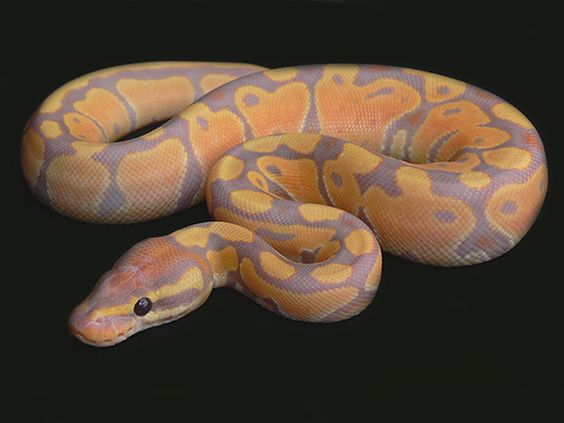
Because certain Coral Glow morphs have dark spots throughout their bodies, they mimic Banana ball pythons.
Even though these morphs have been accessible for over 18 years, they still price $250 or even more.
30. Champagne Ball Python
The Champagne, or Puma, the morph is unique in that it lacks typical markings and is a medium to deep brown hue with a stripe down its back.
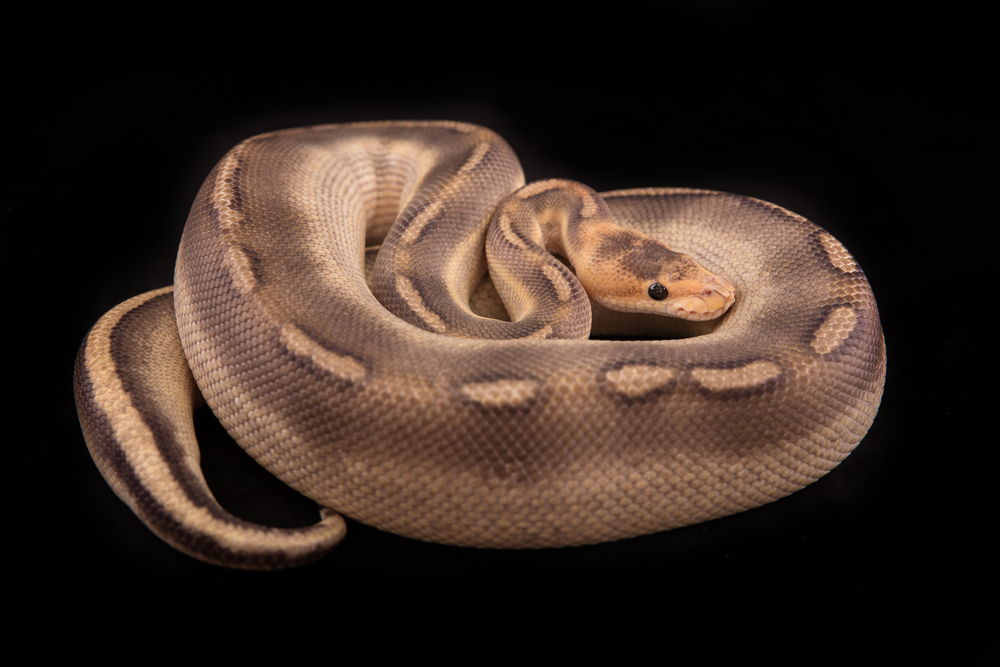
Even though this morph is very recent, having been produced in 2005, they may be sold for approximately $200.
31. Red Ball Python
The Red gene influences just color and is a simple, dominant feature. Patches in the design have a dark crimson tint but other than that it seems normal.
This particular genetic origin is unclear, but it can be purchased for $100.
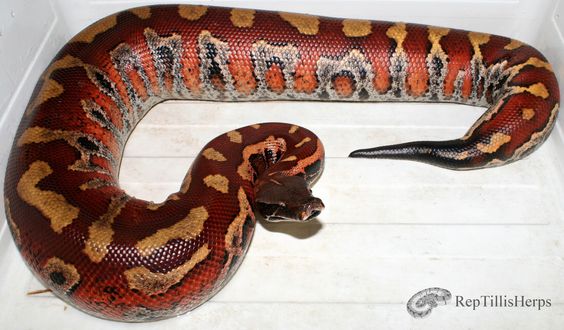
Breeders love this Ball Python since it highlights the copper and reddish tones in other morph designs. With deeper morphs, it can also enhance color contrasts.
32. Lemon Blast
The 2003 Lemon Blast is a brilliant cross between the dominant Pinstripe and codominant Pastel genetics.
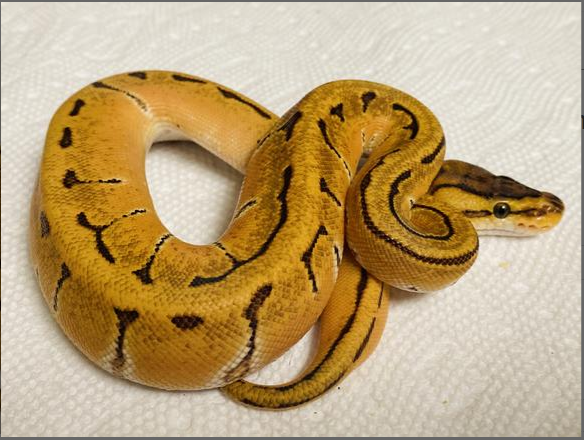
perfectly-lined, complicated linear lines of deep brown and black hues are common in this morph, with specks of color sprinkled over the body.
With a softer, pattern-less line down the back, the base hue can range from brilliant yellow to dusk orange.
Most breeders charge $200 for this python because of its unusual design.
33. Highway Ball Python
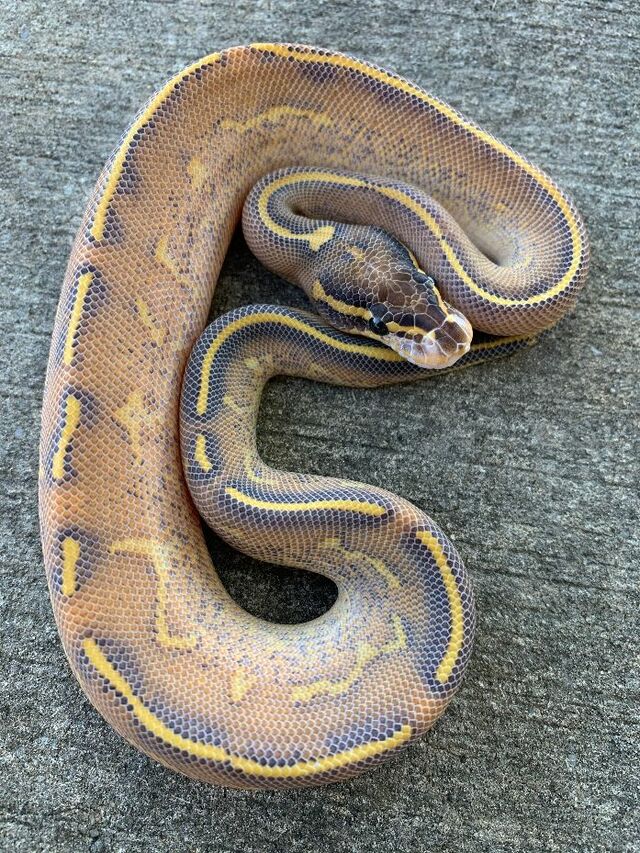
Breeding the Gravel with a Yellow Belly morph creates the Highway. They have a copper-colored body and may have tiny circles running down their bodies.
This one-of-a-kind morph will cost you around $500.
34.Dreamsicles
Dreamsicles are very complicated designer ball pythons that take 2-4 generations to produce an Albino-Lavender and Piebald hybrid.
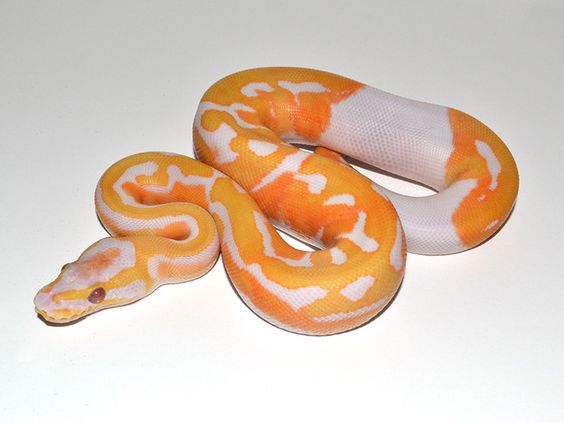
These snakes are usually white or pink in tone, with patterns of clouds strewn across their bodies randomly. Each patch is bright orange and clearly outlined, with little white dots frequently present.
Since 2007, they’ve been one of the most highly prized morphs, costing up to at least $2,500.
35. Yellow Belly
The Yellow Belly was developed from a simple codominant gene and was first verified in 2003.
The Yellow Belly Morph resembles a regular ball python except for the yellowish hue on its belly. Due to their resemblance to regular balls, they are just $50.
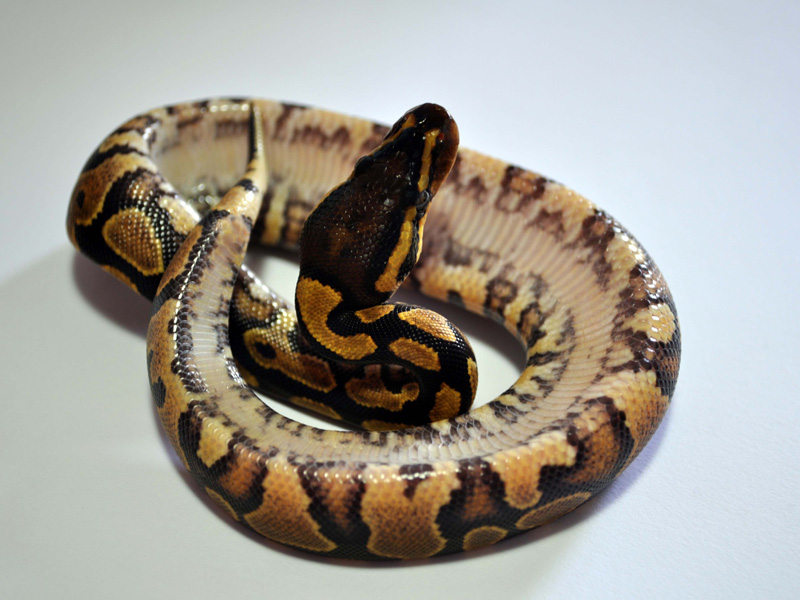
Sometimes Yellow Belly morphs contain flushing or flaring along the belly, however, this isn’t as prominent as it used to be.
36.Woma Ball Python
The Woma Ball Python is named after the Woma Python, and despite being a basic morph with a price tag of roughly $250, they are difficult to produce.
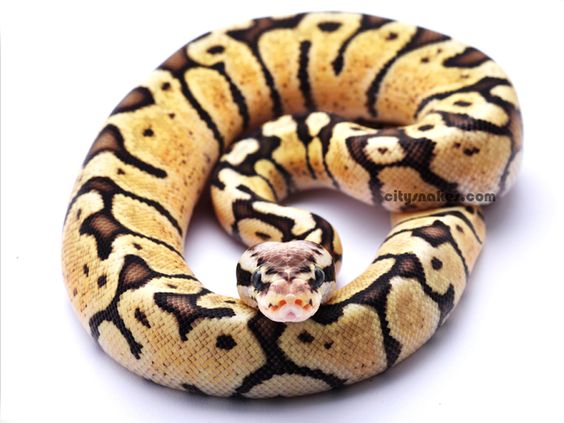
Since the Super Woma dies fast and produces unexpected progeny, they cannot be crossed with each other.
These pythons have brown edges that brighten as they approach the spine. Their top tips are yellowish and their heads are black. They also have darker stripes running down their bodies, which are thinner as they get closer to their tummies.
37. Phantom
A fascinating note about this morph is that, although being verified in 2005, it was accidentally created in 2001 while Ralph Davis’s Goblin morphs research.
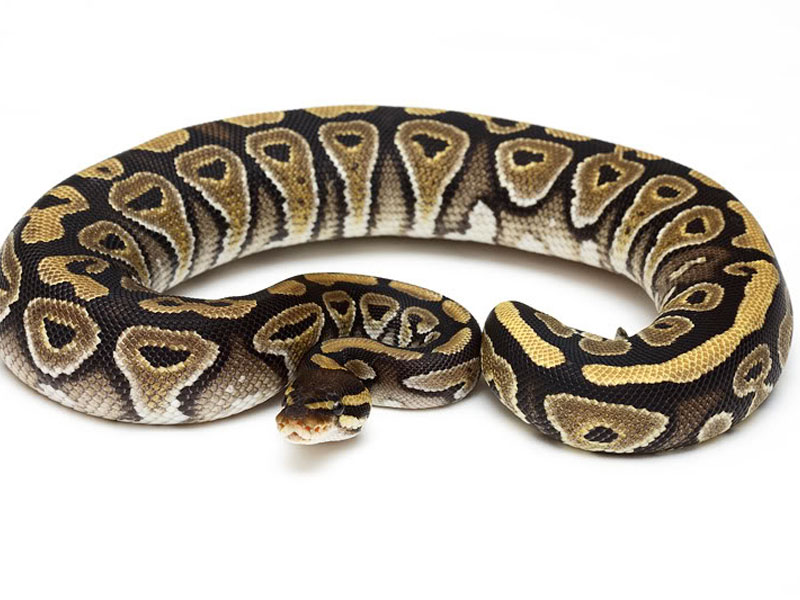
The majority of these snakes start black and lighten to tan as they reach a white belly. They have golden yellow alien helmets with black markings on their appearance. They have markings down their spine, as well as some banding tail sections.
Breeders typically keep the Phantom morph, but since it is a common morph, one may be purchased for $100.
38. Candino
In 2012, the “Candino” was formed by combining the recessive Albino and Candy genetics.
The base hue is pale pink or lilac, with a brilliant yellow smudged design. The patches have a small fading around them, emphasizing them for a very outstanding look.
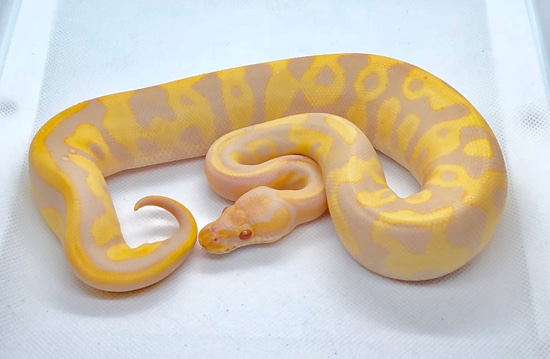
You won’t ever find this species of python in the wild, and a nice example of this custom hybrid would set you back roughly $400.
39. Chocolate
Since 1999, when they were identified as a genetic mutation, these snakes have been constantly popular, ranging roughly $100. A strong color design, on the other hand, may cost up to $250.
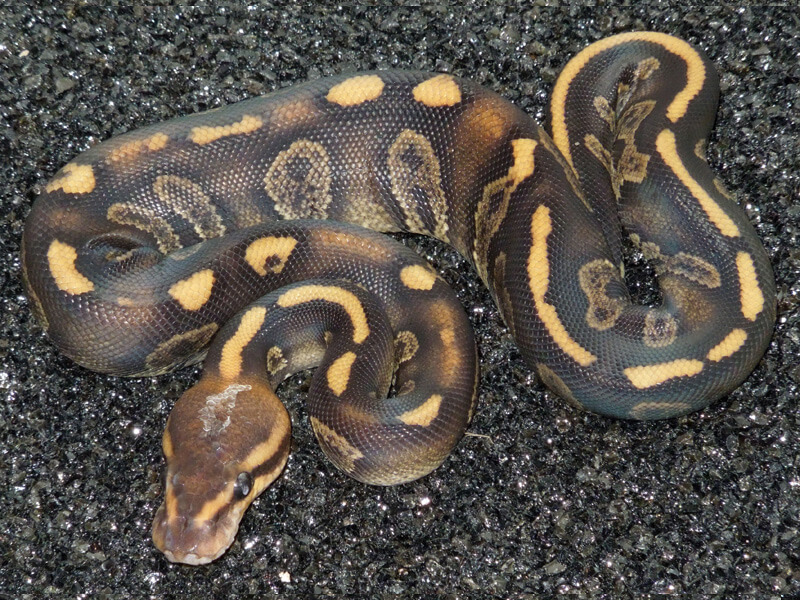
With toffee peepholes and alien face patches, they have a dark brown base tone.
The majority of the dots have black loop cores. They also have strong toffee patches across their spines, and their heads are color and pattern-wise fairly normal.
40. Spotnose
In 2005, a codominant mutation was used to create the Spotnose for the first time.
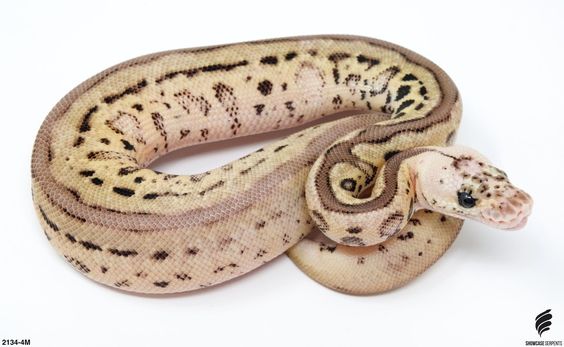
Only the snake’s head is affected by the Spotnose gene, which lends it more alien head forms with a luminous light brown spot pattern.
For $150, you can get a Spotnose.
41. Candy
Candy morphs are a rare occurrence. They are born albino and gradually darken as they get old. This is one of the more recent ball pythons, and one will set you back for around $300.
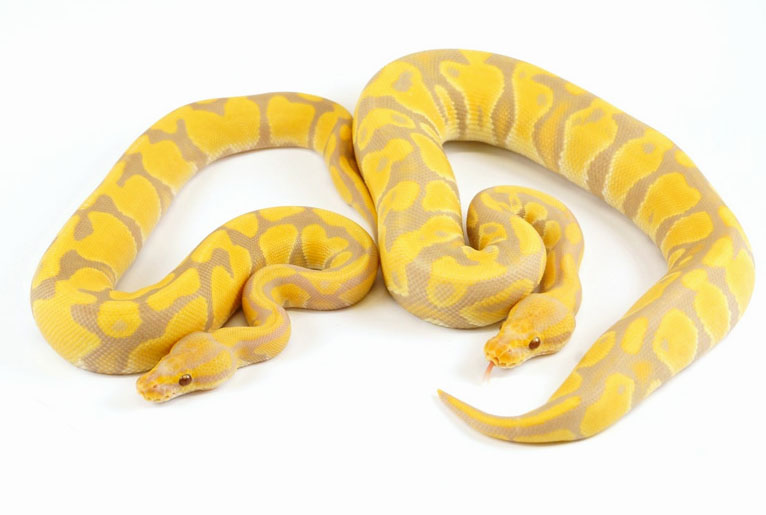
While maintaining the brilliant yellow coloring, they tend to take on deep purple, grey, and beige base hues.
42. Desert Enchi (tiger)
The Desert Enchi morph, often known as the Tiger, has a bright yellow and orange base. It has a design of stripes and dots on it.
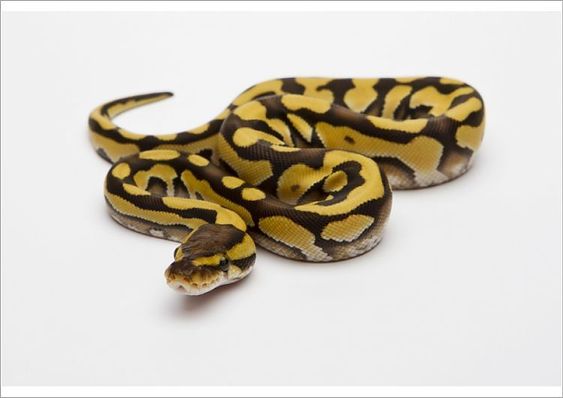
The cost you’ll have to pay is determined by the pattern’s brightness, which can vary from $200 to $400.
43. Super blast:
A Super Pastel python is combined with a Pinstripe to create the Super Blast creative pattern.
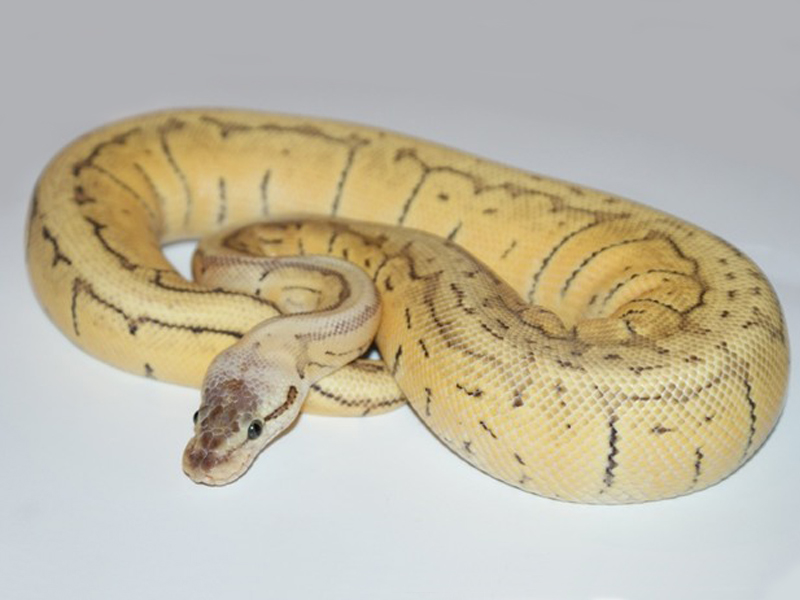
Lovers of Ball Python are fascinated by the stunning Super Blast. They are presently priced at $425 because of their publicity.
The hue of these snakes is a dreamy, vivid pastel yellow. They feature a light-striped spine with narrow, fading black vertical lines running along the edges.
Dark patterning can be found on their head with a pale hue on the remainder of their body.
44. Acid
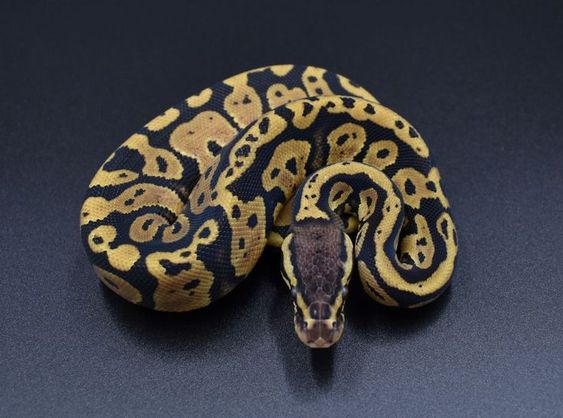
Since 2015, the Acid Ball Python has been recognized. They have a warm golden core with a deep brown body. They feature a black zipper and a yellowish belly. However, this morph is relatively new, it has risen in importance, and an Acid Ball Python may cost up to nearly $1,000.
45. Ringer
Breeders typically utilize the Ringer because it can reveal snakes that carry the Pied gene, which is one of the most common morphs.
They have morph designs and hues that are either ordinary or unique. The genetic basis is uncertain, and having a Ringer does not guarantee that the snake will generate Piebald offspring.
A Ringer is a reasonably inexpensive morph, costing around $100.
46. Blue-eyed leucistic:
Blue-Eyed Leucistic have pristine white skin and blue eyes, and they are exceptionally unusual. Due to their intricate genetic structure, they are extremely rare.
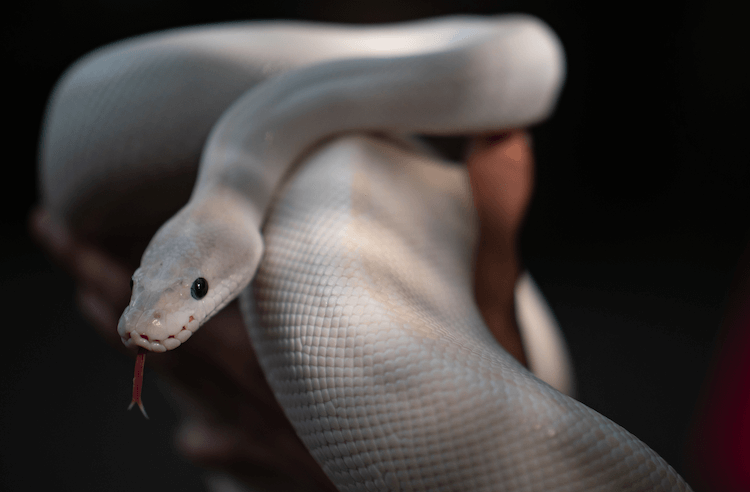
It takes 2-4 generations to breed them from up to five distinct morphs (Mojave, Lesser, Butter, Russo, and Phantom).
Because of the difficulties in reproducing this snake, it sells for $800 to $1,000.
47. Fire Ivory
The Fire Ivory often referred to as a “Fire Super Yellow Belly,” was created in 2012 using Fire and Ivory morphs.
Ivory ball pythons are the result of a cross of two Yellow Belly morphs, creating the Fire Ivory a three-gene hybrid.
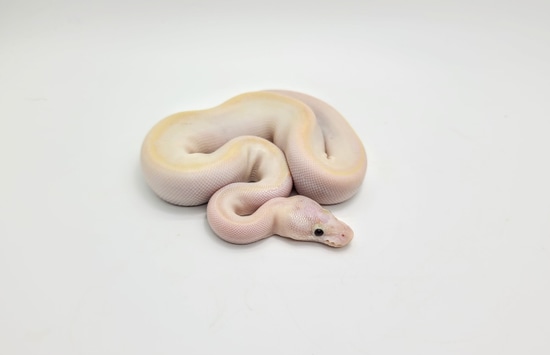
They have a light pink-colored base with grey blushing, giving them a filthy appearance. Except for one yellow stripe down their back, they are patternless.
These snakes are $375 each and have a real one-of-a-kind look.
48. GHI
They were initially identified in 2007 and are reasonably priced morphs, costing around $100 a piece.
Ghi has a pale-colored belly with no patterns and black basic color on their body.
Designs of rich orange-brown blotching with black flecks and dots may also be found on GHI Python. The basic hue begins to flush or diminish in between spots towards the belly, and silver flames may be seen as a line along the bottom margins.
49. Bongo Pastel
In 2012, this morph was created by combining a Bongo with a Pastel morph.
The basic coloration of these snakes is a dark brown that fades to ivory along the edges of the stomach. Their design is similar to that of a Bongo, but with fewer lines along the back and “alien-head” spots with black centers on the edges.
The Pastel gene, on the other hand, boosts contrast by transforming patches into brilliant yellow forms bordered by fading base color parts.
Depending on the condition of the coloring, this brilliantly contrasted python may be bought for $300-$500.
50. Blue Eyed Lucy
The Blue-Eyed Lucy isn’t as unusual as the Blue-Eyed Leucistic, and they aren’t completely albino. One will cost you roughly $700, and they’re a lot simpler to come by than the morphs.
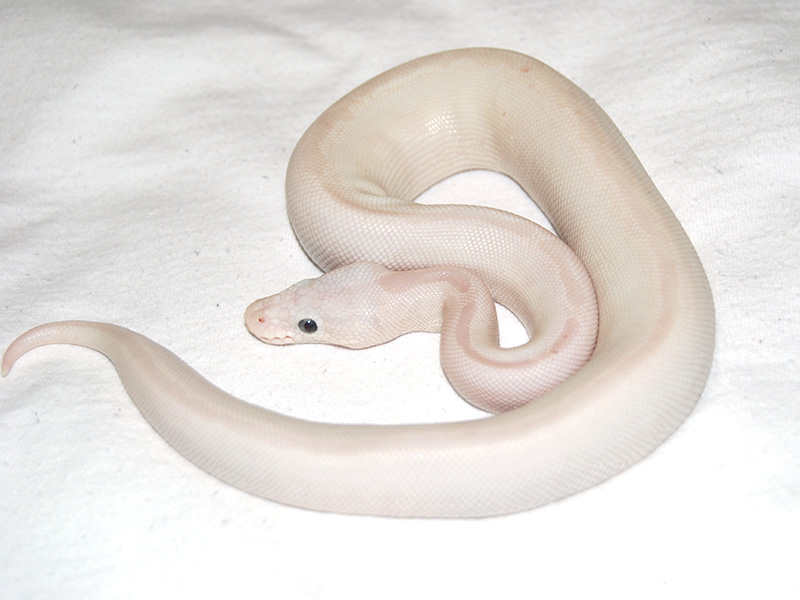
Because most Blue-Eyed Lucy variants have modest yellow rare bands, they aren’t as desired as their equivalents.
Their brilliant eyes, unlike those of other leucistic or albino pythons, are not too sensitive to light.
Conclusion:
Ball Pythons are among the most diversified reptiles on the planet.
Ball Python Morphs are available in a wide range of colors and textures, ranging from gorgeous “alien” spots to an entirely white body. The calm, kind temperament of these pythons, as well as their stunning markings, make them popular.
Ball pythons are an excellent python to have if you’re searching for your first python or if you’re an expert wildlife biologist seeking to add additional color to your selection.
What is the rarest morph of a ball python?
The pastel zebra morph is the most uncommon ball python morph.
The gene was found in 2005, but it wasn’t until 2015 that Rousses Reptiles was able to successfully produce it. These incredible creatures may be mixed with recessive morphs such as ghosts and clowns.
Which ball python morphs are dominant?
The Spider mutation and the Pinstripe mutation are two such examples of Dominant Python morphs. Both of these genes may be mated together to create a homozygous super form that looks identical to the specific gene Spider or Pinstripe but produces a 100% output of visual progeny when employed in mating.
Is there such a pink ball python?
There aren’t any inexpensive pink ball pythons right now, however, corn snakes have multiple modest pink morphs, as others have stated. You should think about getting a coral white corn snake.
What recessive ball python morphs are there?
The Red Axanthic Ball Python is a dominant morph, whereas the Axanthic Ball Python is a recessive crossbreed. The difference between the Red Axanthic and the het Red Axanthic is often misunderstood. The heat is an observable morph, while a Red Axanthic is the superior version of the morph since it is a co-dominant morph.
Is it possible to breed various snake morphs?
Any morph of ball python may be crossed with another morph to create a limitless variety of colors, shapes, and textures.
Some morph features will outweigh others, so do your research before mating your ball pythons to guarantee you get the outcomes you want.
Is it true that all spider morphs wobble?
At some time, all spider ball pythons might wobble. Although it isn’t extreme, it is typical of that morph. Fertility problems in female desert morph ball pythons are no different than in males. In their DNA, the spider morph contains the pattern and the wobble in a strongly related region.
Is it simple to breed ball pythons?
Ball pythons are excellent snakes to produce for snake owners. These sturdy snakes don’t require much encouragement. You can start hatching your Ball Python morphs with a little effort, patience, and knowledge of genetics. There are about 50 distinct morphs that may be combined effectively.
What are a few interesting facts about the ball python?
Ball pythons get their name from their strong protective instincts. When they are frightened, they curl up into a ball and place their head in the center.
They are fairly gentle and may be readily handled with sufficient socialization. Because ancient nobility used them as ornaments, they are also known as the “royal python.”
About The Author


